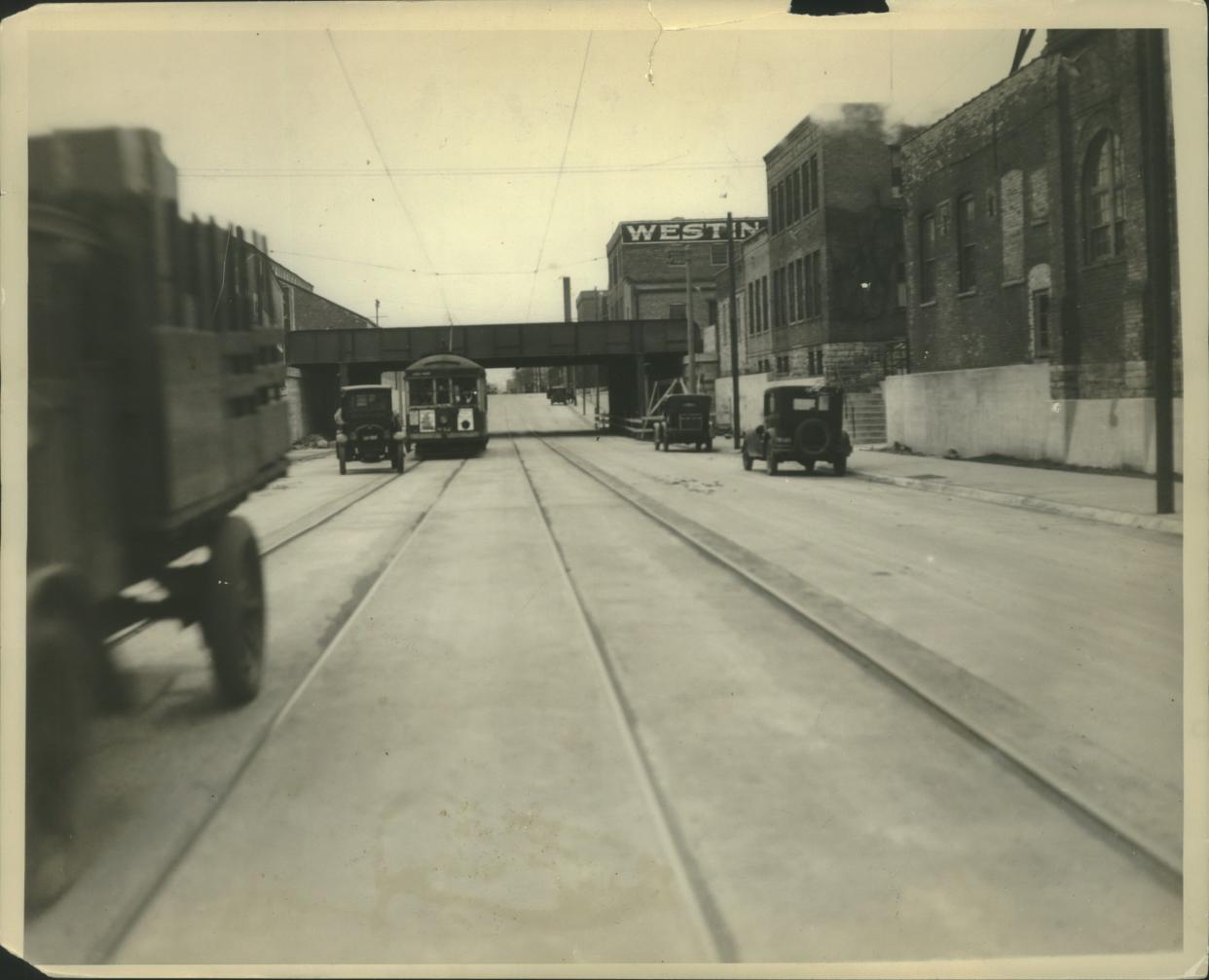Why is Center Street in Milwaukee north of North Avenue?

It's been one of Milwaukee's great directional mysteries.
As one reader asked What the Wisconsin?, the place where the Journal Sentinel takes on questions large and small about our state, our communities and the people in them: "What is Center Street the center of, and why would it be north of North Avenue?"
The answer is actually pretty straightforward, but with an unlikely backstory.
More: Do Milwaukee streets with other Wisconsin cities' names really lead to where they're named for?
More: What the Wisconsin? The story behind Highway 100, aka Lovers Lane and Mayfair Road
North Avenue was created as Milwaukee's northern boundary. It didn't last long.
Ten years after Milwaukee was incorporated as a city, North Avenue was created in 1856 by ordinance as the northern limit of the city.
But it wasn't for long. Within a year, the city's northern limit was pushed about a mile farther, to Burleigh Street. (The street/address numbering system Milwaukee adopted by 1930 set North Avenue at 2300 North, and Burleigh at 3100 North.)
More: Why some of Wisconsin's addresses are so long and full of numbers
Milwaukee's Center Street wasn't named for its location; it was named for a person. (It also wasn't Milwaukee's first Center Street.)
Center Street, at 2700 North, is halfway between North and Burleigh. But that's not why it's called Center Street.
The street was named for Alexander J. Center, an Army lieutenant who in 1836 helped come up with the idea that opened up Milwaukee's harbor to bigger ships and safer shipping: Dig a "straight cut" from Lake Michigan to the Milwaukee River, about a half-mile north of the river's natural opening to the lake, which was shallow and often treacherous for larger ships. In gratitude, officials named the route Center Street after the engineer. (Another bit of civic recognition: Center and the other Army lieutenant who mapped the "straight cut," listed only as "Lt. Rose," are the only people named in Milwaukee's original city charter from 1846.)
When the federal government dragged its feet on funding the project, local backers raised the money instead. When the cut was finally completed in 1857, the city decided to name the north side street after Center in its place.
Who was Alexander J. Center, the namesake of Milwaukee's Center Street?
A native of New York, Center started his military career at West Point Military Academy in 1823. After graduating in 1827, he was commissioned a second lieutenant in the Army's Fifth Infantry Regiment, sent first to Missouri and then several posts in Wisconsin, serving in the Black Hawk War in 1832.
In 1832, Center was assigned to topographical duty. In addition to mapping the "straight cut" opening up Milwaukee's harbor, he led the survey for the Military Road, connecting three frontier-era forts from Green Bay to Prairie du Chien. (Surviving parts of the road are on the National Register of Historic Places.)
After resigning from the Army in 1836, Center was a civil engineer on railroads in Michigan and the expansion of the Erie Canal; a railroad, coal industry and banking executive; and, during the Civil War, superintendent of the Overland Route, transporting U.S. mail from the Missouri River to California. He died in 1879 at age 71.
Sources: Journal Sentinel archives; Wisconsin Historical Society; "Milwaukee Streets: The Stories Behind Their Names" by Carl Baehr; "Milwaukee: The History of a City" by Bayrd Still; "The Making of Milwaukee" by John Gurda; "Tenth Annual Reunion of the Association of the Graduates of the United States Military Academy at West Point" (1879).
This article originally appeared on Milwaukee Journal Sentinel: What the Wisconsin: Why Milwaukee Center Street north of North Avenue

